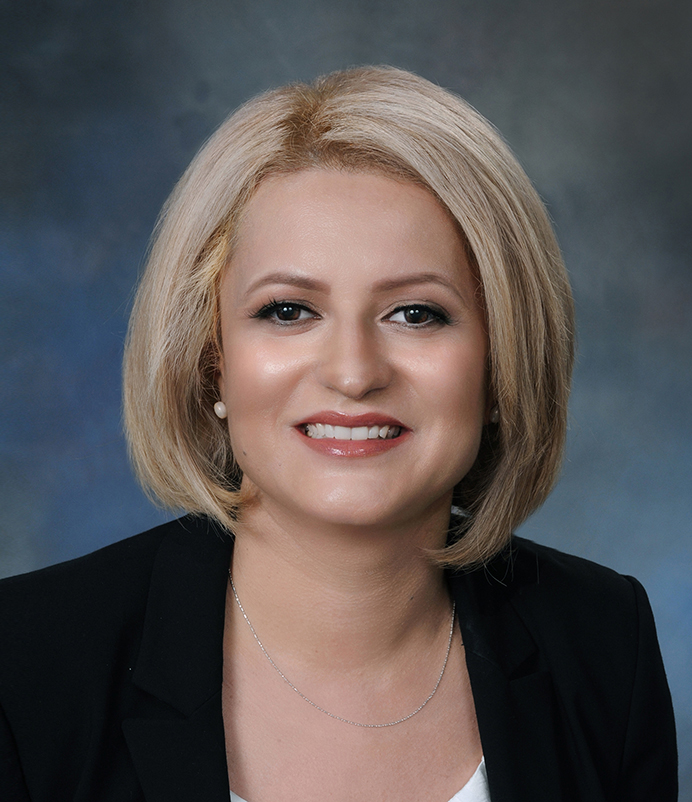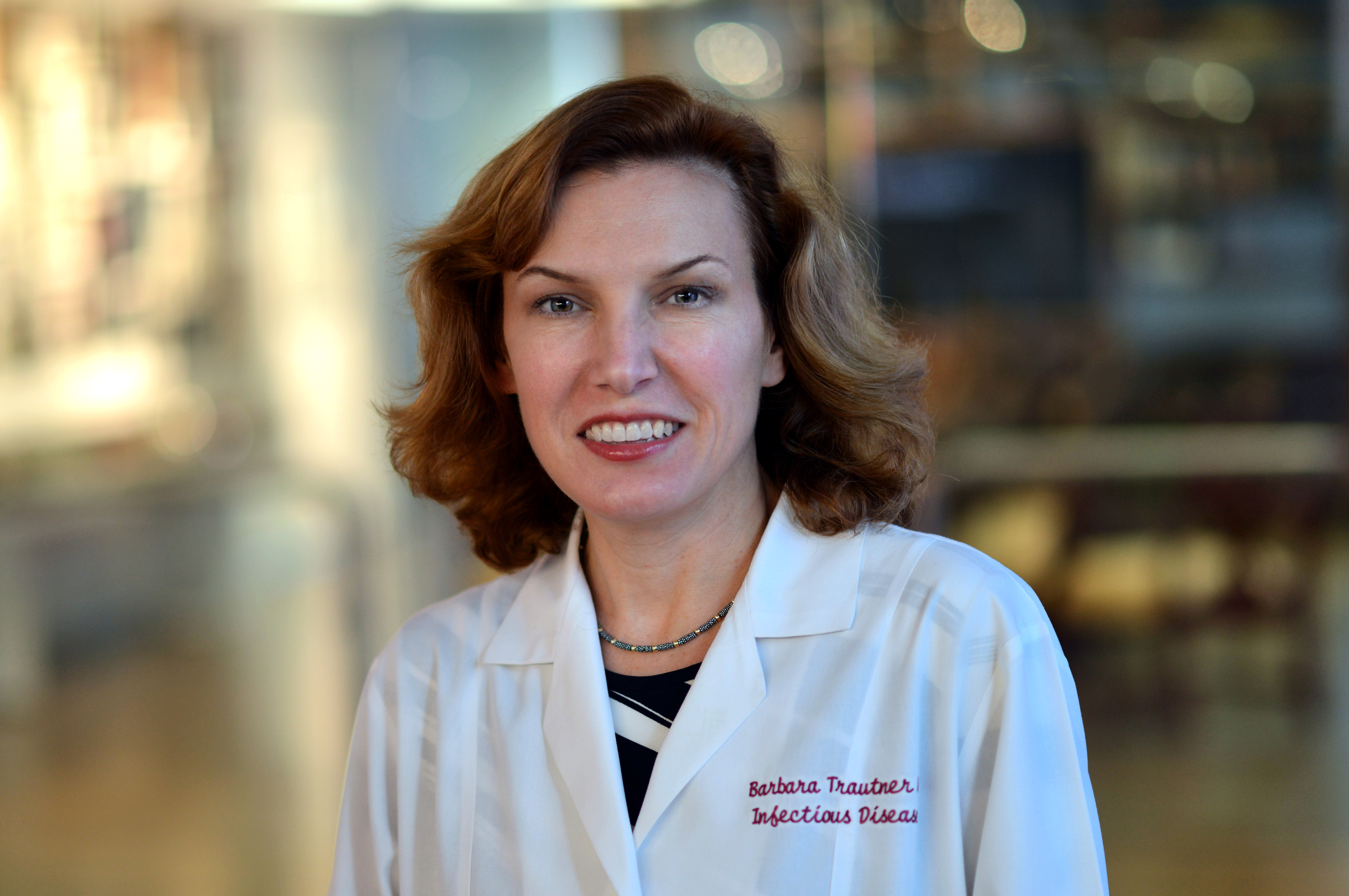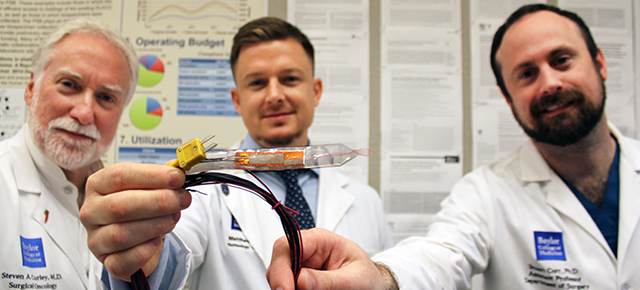Study shows many people use non-prescription antibiotics
“You may be putting your health at risk unnecessarily by using non-prescription antibiotics,” said Dr. Larissa Grigoryan, an assistant professor of family and community medicine at Baylor College of Medicine.

“It is not new to report that people are using antibiotics without a prescription,” said Dr. Barbara Trautner, associate professor of infectious diseases in the departments of medicine and surgery at Baylor. Trautner is also a researcher with Center for Innovations in Quality, Effectiveness and Safety at the Michael E. DeBakey Veterans Affairs Medical Center in Houston. “However, it is new that we understand how harmful using non-prescription antibiotics is, not just in a general sense in society, but to the individual. Any antibiotic use confers a direct risk to the person who takes them. They may develop resistant bacteria that later will cause a serious infection or may suffer serious side effects from common antibiotics.”
Grigoryan, Trautner and their colleagues collected surveys from 400 respondents. Through these surveys the team found that 5 percent reported non-prescription use of systemic antibiotics in the last 12 months, and 25 percent reported intended use and 14 percent had antibiotics stored at home. The results of this work appeared in the July 11, 2016 issue of Antimicrobial Agents and Chemotherapy.
The study found that the common places people obtain non-prescription antibiotics include stores or pharmacies, and that frequently people use “leftover” antibiotics from previous prescriptions. People also obtained antibiotics abroad or from a relative or friend. According to the results, there were no significant differences in the rates of non-prescription antibiotic use across different race/ethnicity groups.
“Answers recorded in the surveys show that most of the time people use non-prescription antibiotics for viral infections and to treat symptoms such as runny nose, sore throat, or cough. These are symptoms which many times don’t need antibiotics in the first place,” said corresponding author Grigoryan.
Trautner, who is the senior author of the paper, said she thinks lack of easy access to doctors contributes to the use of non-prescription antibiotics.

“I think everyone is trying to take care of their health, but everyone is busy and they don’t have the time to go and see the doctor,” Trautner said. “However, I think, use of non-prescription antibiotics is going to resolve on its own if people could access medical care easily. In many situations their doctor would say they don’t need antibiotics to treat symptoms such as a runny nose, sore throat, or cough condition. Many times, as doctors, we mainly give patients reassurance and, if we could do that quickly and efficiently for all, I think people wouldn’t be using antibiotics on their own.”
When Grigoryan moved from the Netherlands, she said, she believed that the European study she conducted on the use of non-prescription antibiotics could be relevant to the United States.
“There are no studies in the United States on the use of non-prescription antibiotics in the general population. Previous studies in the U.S. on this topic have been restricted to Latin American immigrants,” said Grigoryan.
Grigoryan added that when she came to Houston and saw all of the multiethnic communities, she thought it would be a great place to study non-prescription antibiotics in the U.S. The study became possible through the strong interest and support from co-author Dr. Roger Zoorob, professor and chair of family and community medicine at Baylor.
“We needed a study that included a socioeconomically and ethnically diverse sample,” Grigoryan said. “We wanted to have a sample that was representative of Harris County so we took into account race and ethnicity in our samples and included both private and public clinics because patients are different in those clinics.”
According to the results of this study, the use of non-prescription antibiotics in the U.S. is higher than the use in eight northern and western European countries.
Trautner said she hopes this study will lead to more in-depth research on non-prescription antibiotic use.
“What I like about this study is that it gives us somewhere to go. When you want to improve healthcare, first you have to describe the problem, then you have to figure out why the problem exists and then you need to address it,” Trautner said. “What we’ve done with this study is describe the problem, but the next thing we need to do is figure out why it exists. What we don’t have in this is information about why the participants would do this. Was it hard for them to get to the clinic or was it that they believed they could self-manage? Once we understand the whys, we can do an intervention to improve antibiotic use by the public.”
###
Dr. Susan Nash, assistant professor of family and community medicine at Baylor, also contributed to this work.
This research project received no specific grant from any funding agency in the public, commercial or not-for-profit sectors.
Julia Bernstein





Every European country has either a single-payer health care financing system or some other type of universal access to healthcare. I’m certain that accounts for the differences you found. Did you also ask if people had health insurance or access to coverage for prescription drugs? Use of nonprescription antibiotics is sure to be highly correlated with lack of access to healthcare in the US – a rampant problem.
All surveys were performed in the waiting rooms of the clinics, so respondents had access to healthcare. Twenty-three percent of our respondents were uninsured but had benefits from county, allowing access to public clinic providers at either very low or no cost. I was involved in a 19 country study on the same topic in Europe. The prevalence of non-prescription antibiotic use varied widely, with the highest rates in southern and eastern Europe and the lowest in northern Europe. As you mention, almost all of these countries have universal access to healthcare, therefore, other factors may also influence non-prescription use. In another study on cultural differences in public’s attitudes, beliefs, and knowledge including 11 European countries, we found that the levels of misconceptions contributing to inappropriate antibiotic use were also the highest in southern and eastern Europe. Further studies are needed to understand the “why” or what factors are driving non-prescription use of antibiotics.
Larissa Grigoryan
Thanks so much for answering my question. I hope you will be able to continue your investigation into factors associated with these different rates.
We see it as a common practice among Latinas who have little connection with health care systems but easy access to antibiotics (usually penicillin or sulfa drugs in powder or liquid form) at flea markets and from friends. That is not entirely bad, since some recent research shows that very short course antibiotic treatment can be effective in stopping UTI and otitis media if administered at the first symptoms. Neither community clinics nor “Cadillac” private clinics in this country are able to be that responsive!